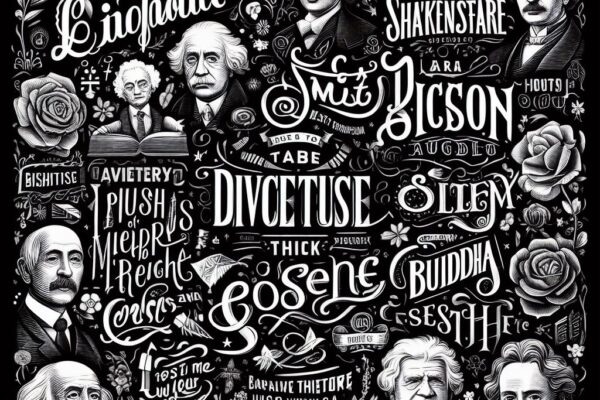What Is Easter?
In the Christian calendar, Easter is the holiest day.
Easter is a festival commemorating the resurrection of Jesus Christ, which has been celebrated by Christians annually since the earliest days of the Church. Easter Sunday is the culmination of Holy Week, the final day of Lent, and the culmination of the Easter Triduum (which began on the evening of Maundy Thursday and continued through Good Friday, Holy Saturday, and Easter Sunday), as well as the beginning of the Easter season of the liturgical year.
The risen Christ symbolizes the triumph of good over evil, sin, death, and the material body.
Why does Easter change every year?
The date of Easter is based on the lunar calendar, which means that it is determined by the cycles of the moon rather than the solar calendar that we use in our day-to-day lives. Specifically, Easter is based on the first full moon that occurs on or after the vernal equinox, which is the first day of spring in the Northern Hemisphere.
This system of determining the date of Easter is known as the ecclesiastical or computus system, and it was established by the early Christian church in the 4th century. The goal of this system was to establish a consistent date for Easter across all Christian communities, regardless of their location in the world.
However, the ecclesiastical system is quite complex, and it involves a number of factors that can cause the date of Easter to shift from year to year. For example, the date of the vernal equinox can vary slightly depending on the year, and this can impact the date of Easter. Additionally, the ecclesiastical system uses a specific formula to determine the date of the full moon, which can also cause the date of Easter to shift.
Despite these complexities, the ecclesiastical system has been used for centuries to determine the date of Easter, and it continues to be used today. The shifting date of Easter can make it difficult for some to plan celebrations and events, but it also adds to the holiday’s mystique and importance.
When Is Easter 2023?
Sunday, April 9, 2023, is the date set for Easter. As a “movable feast,” Easter can fall on any Sunday between March 22 and April 25. When did Easter start moving around (but Christmas didn’t)? Discover the most common and most unusual Easter dates, as well as the process that determines them.
Easter Dates
| Year | Easter Sunday (Gregorian calendar) | Eastern Orthodox Church (Julian calendar date converted to Gregorian) |
|---|---|---|
| 2022 | April 17 | April 24 |
| 2023 | April 9 | April 16 |
| 2024 | March 31 | May 5 |
| 2025 | April 20 | April 20 |
Dates for Easter Sunday according to the Gregorian calendar (2022-2025) and the Julian calendar (used by the Eastern Orthodox Church) are listed below. It’s fascinating to see how the minor discrepancy in dates between the two calendars can lead to distinctive celebrations and traditions among various Christian groups.
Is Easter Always in March or April?
Easter is usually observed in spring, between March and April, but the precise date can shift for a variety of reasons. In most years, Easter is celebrated on the first Sunday after the first full moon after the spring equinox. Therefore, Easter can occur on any date between March 22 and April 25.
The complicated method used to determine when Easter falls is to blame for this discrepancy. Astronomical calculations and established Christian customs are used to arrive at the date.
Easter is still regarded highly by Christians no matter when it falls. Millions of people all over the world take part in this time of introspection, renewal, and celebration. No matter what month it occurs in (March or April), Easter always serves as a reminder of the hope and joy that come with new beginnings.
What Is the Most Common Easter Date?
The 19th of April is typically used as the date of Easter celebrations. This date has occurred 22 times over the past 100 years, making it the most frequently observed Easter date in modern times. For the majority of the twentieth century, Easter was celebrated on April 19th.
However, it’s important to note that Easter can fall on a wide range of dates between March 22nd and April 25th. Due to the fact that the date of Easter is calculated in a way that incorporates both astronomical and Christian traditions, this is the case.
How Is The Date of Easter Determined?
First Sunday after the Paschal Full Moon is always Easter Sunday. Exactly what does “Paschal Full Moon” mean? As a matter of fact, it is the first Sunday after the full moon that occurs on or after the vernal or spring equinox in March.
The date of Easter is determined using a combination of astronomical events and Christian traditions. It is based on the lunar calendar, which is why Easter falls on a different date each year. The lunar calendar is based on the phases of the moon, and a lunar month is 29.5 days long. This means that a lunar year is 354 days long, which is shorter than a solar year by about 11 days.
The Christian tradition of celebrating Easter on a Sunday is based on the belief that Jesus Christ rose from the dead on a Sunday. This tradition dates back to the early days of Christianity, when the first Christians celebrated Easter on the Sunday after the Jewish holiday of Passover.
To determine the date of Easter, the first step is to calculate the date of the March equinox. The equinox is the moment when the sun appears to cross the equator, marking the start of spring in the Northern Hemisphere and autumn in the Southern Hemisphere. The March equinox always occurs on either March 20th or March 21st.
Once the date of the March equinox has been calculated, the next step is to calculate the full moon. This is done by calculating the first full moon after the March equinox. The full moon always occurs 14.8 days after a new moon, which is the first day of the lunar month. This means that the date of the full moon can be calculated based on the date of the new moon.
The Sunday following the full moon is then designated as Easter Sunday. This means that Easter Sunday can fall on any date between March 22nd and April 25th.
However, there are some exceptions to this rule. In 1582, Pope Gregory XIII introduced the Gregorian calendar, which was designed to align the calendar with the astronomical events more accurately. This calendar reform eliminated 10 days from the calendar, and it also established rules for calculating the date of Easter. The Gregorian calendar is now used worldwide, except in some Orthodox Christian countries that still use the Julian calendar.
In the Gregorian calendar, the date of the March equinox is calculated based on the average length of the solar year, which is 365.2425 days long. The date of the full moon is calculated using the same method as in the Julian calendar, but with some adjustments to account for the differences between the two calendars. This means that the date of Easter can differ between the Julian and Gregorian calendars, which can lead to some discrepancies in the date of Easter for different Christian denominations.
What Happens When the Full Moon and Spring Equinox Occur on the Same Day?
If the spring equinox and a full Moon fall on the same day, Easter is typically celebrated the following Sunday. There is a catch, however: the Christian Church decided to simplify the process of calculating the date of Easter by always observing the spring equinox on March 21. This is despite the fact that the equinox date changes over time and is actually getting earlier.
Confusion can arise when the full Moon and the astronomical equinox fall on the same day, as it did in 2019 on Wednesday, March 20. This is because the astronomical equinox date differs from the Church’s observed equinox date.
The above formula indicated that Easter would fall on March 24; however, the holiday was actually celebrated on March 25. However, since the equinox is observed by the Church on March 21, the full Moon was not “on or just after” the equinox and the next full Moon would be used to calculate Easter. Since the full Moon occurred on April 19, 2019, Easter was celebrated on the following Sunday, April 21.
What Is the Paschal Full Moon?
The Paschal Full Moon is an astronomical phenomenon that has played a crucial role in the calculation of the date of Easter. It is defined as the first full moon that occurs on or after the vernal equinox, which is typically around March 21st. This means that the Paschal Full Moon can occur on different dates each year, as it is dependent on the timing of the equinox and the full moon.
The term “Paschal” comes from the Greek word “Pascha,” which means “Easter.” The Paschal Full Moon is significant in the Christian tradition because it is used to determine the date of Easter. According to the rules of the Gregorian calendar, Easter falls on the first Sunday following the first full moon after the vernal equinox. This means that the date of Easter can vary between March 22nd and April 25th, depending on the timing of the Paschal Full Moon.
The Paschal Full Moon has a long history in astronomy and religion. In ancient times, the lunar cycle was used to track the passing of time, and the full moon was often associated with fertility and rebirth. In Christianity, the full moon became an important marker for the timing of Easter, which commemorates the resurrection of Jesus Christ.
Today, the Paschal Full Moon is still used to calculate the date of Easter in many Christian traditions, including the Catholic, Orthodox, and Protestant denominations. While the exact date of the Paschal Full Moon can vary each year, its significance as a marker of rebirth and renewal remains a powerful symbol in religious and cultural traditions around the world.
What Is the Golden Number?
Each year’s new Moon dates are displayed using the Golden Number, which repeats every 19 years.
The dates of the Moon’s phases repeat approximately every 19 years (the Metonic cycle), with the Golden Number standing in for a single year of this cycle. Once the cycle year is known, Easter can be calculated.
How To Calculate the Golden Number:
The Golden Number is a method used to determine the date of Easter in the Julian calendar. It is based on a 19-year cycle, during which the phases of the moon repeat themselves. To calculate the Golden Number, follow these steps:
- Determine the year in question. For example, if you want to find the Golden Number for the year 2023, you would start with 2023.
- Divide the year by 19 and find the remainder. In the case of 2023, 2023 ÷ 19 = 106 with a remainder of 9.
- Add 1 to the remainder. In the case of 2023, 9 + 1 = 10.
- If the number you get is greater than 19, subtract 19 from it. In the case of 2023, 10 is not greater than 19, so you can skip this step.
- The resulting number is the Golden Number for the year in question. In the case of 2023, the Golden Number is 10.
Once you have determined the Golden Number for a particular year, you can use it to find the date of Easter using the Julian calendar. Easter falls on the first Sunday after the first full moon that occurs on or after the vernal equinox. To calculate the date of Easter in the Julian calendar, you would use the following formula:
Easter Sunday = March 22 + [Golden Number + (2 x Year) + (6 x (Golden Number + 1) ÷ 25)] ÷ 7
Using the Golden Number for 2023 (which we determined to be 10), the year (2023), and the formula above, we can calculate that Easter Sunday in the Julian calendar for 2023 will fall on April 9th.
While the Golden Number method is still used to determine the date of Easter in some Eastern Orthodox churches, many Western churches use the Gregorian calendar and a slightly different method of calculation.
Where Did the Word “Easter” Come From?
Easter is a festival and holiday that celebrates the resuscitation of Jesus Christ. It is also known as Pascha or Resurrection Sunday.
First, there’s Pascha (Latin), which is derived from Pesach (Hebrew). To commemorate the first Passover, Moses commands the Israelites to kill a lamb and mark their doorposts with blood, according to the Hebrew Bible. The Lord spared the Israelites’ lives by “not allowing the destroyer to enter your houses to strike you down” (Ex. 12:23).
Paul ties Christ’s resurrection to the Passover in 1 Corinthians 5:7 of the New Testament. Jesus is the paschal lamb who was sacrificed for the redemption of his people, he says. It makes sense that the Feast of the Resurrection would be linked to Passover, since that is when Jesus and his disciples shared the Passover meal. Christians all over the world commemorate the “Paschal mystery” today.
The origin of the name “Easter” remains a mystery. Unfortunately, nobody knows for sure where the term “Easter” came from. It’s not that easy to categorize as having religious or pagan roots.
Historians debate the origin of the term, but one theory points to the Latin term for “white week,” hebdomada alba, which was used to describe the white clothing newly baptized Christians wore during Holy Week. The word was adapted to Easter from its Latin root, esostarum, in Old German.
According to Saint Bede (or the Venerable Bede), an Anglo-Saxon historian who lived in the seventh century, the name “Easter” comes from the Anglo-Saxon goddess of fertility and the dawn, Eostre (who is thought to have originated in what is now Scandinavia). Later on, early Christians began calling April, the month in which Easter was celebrated, “Eosturmonath” (the Month of the Resurrection) (what we now call April).
Alternately, the Latin word for “dawn,” from which the German word “east” is derived, may be the source of the name Easter. The word “easter” originally had several meanings, including “to turn toward the east” and “rising,” and wasn’t always associated with a religious holiday. (Note: The Germans, like the Americans who created Santa Claus, came up with the idea of a “Easter Bunny” who brings candy and toys to good children at Easter.)
No one has ever been able to pin down where the word “Easter” came from in the first place. One of the earliest words ever written, in Old English.
Whether or not Easter was named after a goddess of the dawn or the Latin word for dawn is ultimately unimportant. Today, Christians around the world observe Easter to commemorate Christ’s resurrection and to be reminded that death is not the end.
Read Also: The Gray Area of Sexual Attraction: Demisexuality Explained
What Are The Favorite Easter Recipes Around the World?
Easter is a holiday celebrated in many parts of the world, and food plays a significant role in the festivities. Different regions have unique culinary traditions, and some dishes are more popular than others. Here are some favorite Easter recipes from around the world:
- Hot Cross Buns (United Kingdom): Hot Cross Buns are a British Easter classic. These spiced buns are filled with raisins, currants, and candied peel and marked with a cross on top. Traditionally, they are eaten on Good Friday, but they are available throughout the Easter season.
- Colomba di Pasqua (Italy): Colomba di Pasqua is a traditional Italian Easter cake shaped like a dove. It is similar to the popular Christmas cake, Panettone, and made with flour, sugar, eggs, butter, and candied fruit. It is usually topped with pearl sugar and almonds.
- Tsoureki (Greece): Tsoureki is a sweet Greek Easter bread flavored with orange zest and spices, including cardamom and mahlab. It is braided and decorated with red-dyed eggs, which symbolize the blood of Christ.
- Pashka (Russia): Pashka is a Russian Easter dessert made from cottage cheese, butter, sugar, and eggs. It is molded into a pyramid shape and decorated with candied fruit or nuts. It is traditionally served with Kulich, a sweet bread that is also shaped like a pyramid.
- Capirotada (Mexico): Capirotada is a Mexican bread pudding made with toasted bread, nuts, cheese, and syrup. It is traditionally eaten during Lent and the Easter season, and each ingredient has a symbolic meaning. For example, the bread represents the body of Christ, and the syrup represents his blood.
- Babka (Poland): Babka is a Polish Easter cake made with yeast dough, butter, eggs, and raisins. It is usually baked in a tall cylindrical shape and dusted with powdered sugar. It is often served with a sweet cheese spread called Sernik.
- Kulich (Ukraine): Kulich is a sweet bread that is popular in Ukraine during the Easter season. It is made with flour, sugar, eggs, and yeast, and flavored with raisins and vanilla. It is usually baked in a cylindrical shape and decorated with icing and candied fruit.
These are just a few of the many Easter recipes enjoyed around the world. From sweet bread to spiced buns, these traditional treats are a delicious way to celebrate the holiday.






